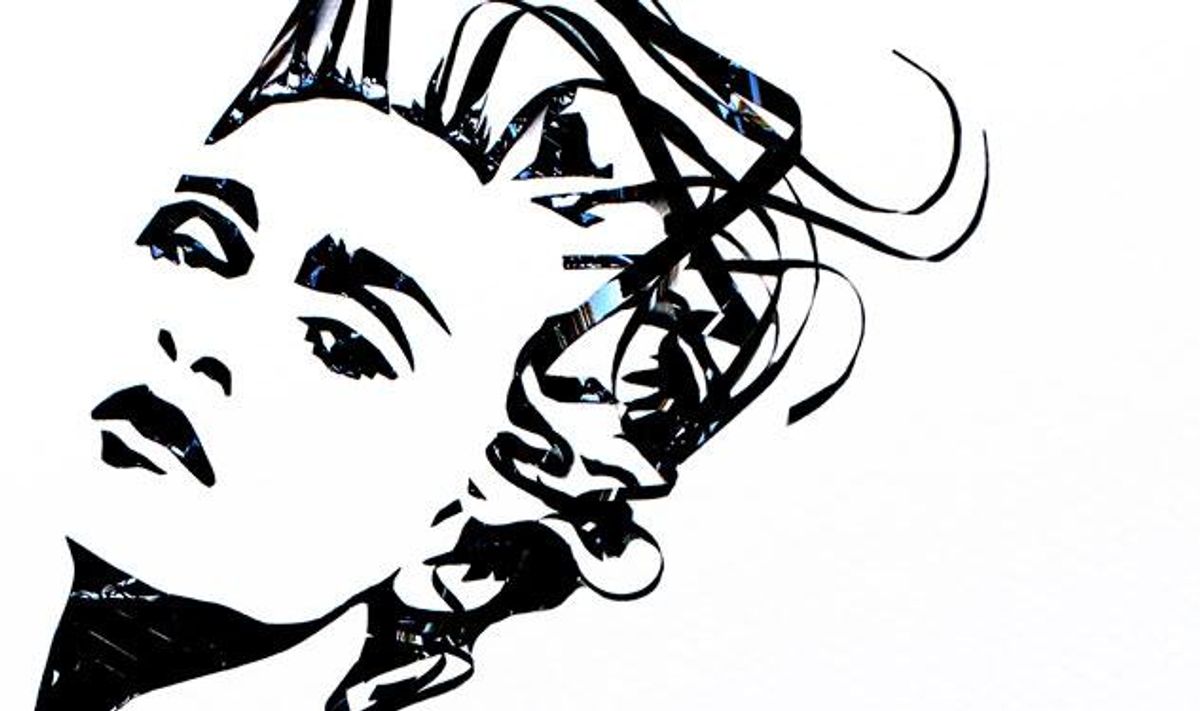
From the gender-bending antics of Eurythmics and Culture Club to the propulsive synthpop of Depeche Mode, New Order, and the Human League, was there ever a more spectacular time for music?
February 18 2014 2:55 PM EST
February 05 2015 9:27 PM EST
By continuing to use our site, you agree to our Private Policy and Terms of Use.

Collages by Erika Simmons
In 1983, the year that McDonald's introduced the Chicken McNugget and the second Cold War was at its height, the world very nearly ended when large NATO exercises were mistaken by an extremely jittery USSR for preparations for a new Barbarossa.
More ominously, compact discs went on sale in the United States and Europe, the first commercial mobile telephone call was made, and the Internet as it's known today came into existence. Oh, and Carrie Underwood was born. In other words, while the world itself didn't end in 1983, all the necessary means were invented for bringing about something much worse: the end of pop music.
Which, rather like the best pop itself, is a bittersweet thought to savor, since 1983 was unquestionably the finest year for pop music ever.
1983 was also -- perhaps not so coincidentally my final year at high school, and instead of studying for my exams and thinking about what I wanted to actually do with my life, I'd taken to hanging around hi-fi shops on my way home, hypnotized by the LED and LCD equalizer displays on the latest sound systems. I fell head over heels in love with a Technics SL-7 turntable. There were various reasons for its quasi-sexual appeal: The total surface area was no bigger than an LP sleeve, and the turntable had a really cool linear arm tracking inside the lid that was automatically operated with buttons at the front. It was very futuristic; like a giant, clunky, analog CD player, before anyone I knew had a CD player.
LISTEN: SPOTIFY PLAYLIST OF 1983, LAST GREAT YEAR OF POP
But the real reason for my infatuation with the turntable was the 12-inch of Eurythmics's "Love Is a Stranger" that its cunning salesman slapped on at full volume. Not only did the otherworldly, drivingly sequenced synth sounds and Annie Lennox's operatic range superbly showcase the sound dynamics of the product, the lyrics Lennox breathed, seemingly in the back of your mind, were the ultimate hard sell:
"And I want you / And I want you / And I want you so."
Pop music in the early '80s was a stranger in an open, gilt-edged, glamorous, sleekly designed car, tempting you in and driving you far away. And not only in Eurythmics songs; the Smiths's second single, "This Charming Man," also released in 1983, featured that same car-driving stranger offering Morrissey a ride. This year was a pre-Fall moment when everything and anything seemed possible -- because it was. The neck-strainingly rapid developments in music-making technology meant that no one really knew what they were doing until they'd actually done it. Every record was a revelation. A miracle. There were no rules because there was no manual. Invention was king. Eurythmics recorded their sophomore album, Sweet Dreams, for example, on a simple TEAC eight-track in an attic, without any of the fixtures of a professional studio. The title song was recorded in a single take, with Lennox improvising most of the lyrics on the spot and David Stewart tapping on half-filled milk bottles to produce that chiming sound as Lennox sings "Hold your head up / Keep your head up." In this new landscape, record companies had little choice but to indulge their prodigies in their pixie boots with their pixie powers. (Although that didn't stop "Love Is a Stranger" from being yanked off the air during an early transmission on MTV by executives who confused Lennox for a transvestite.)
READ: A Musical Primer to 1983
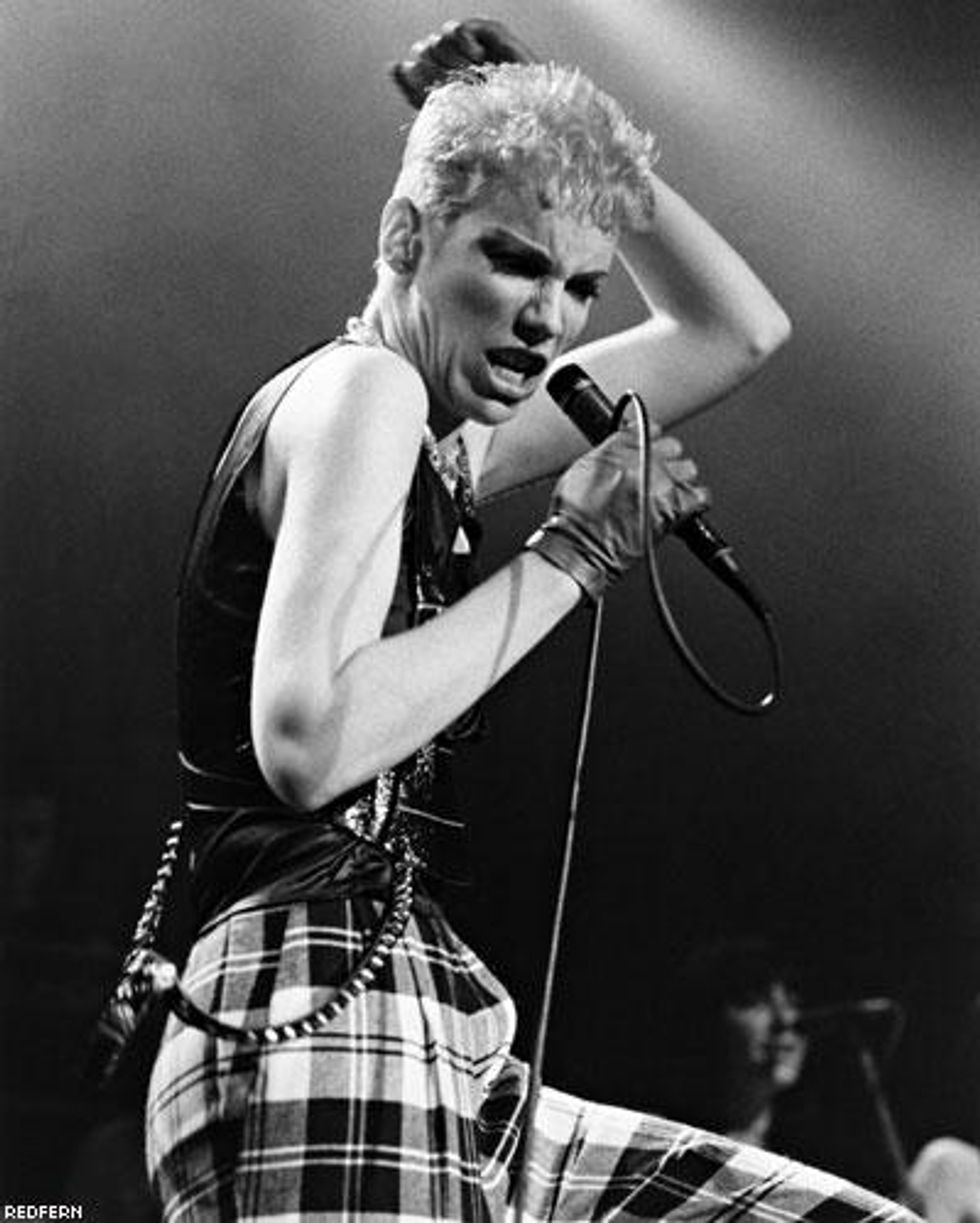
This was also the era of the wizard producer: industry legends like Martin Rushent, who fashioned the sound of the Human League, and most famously Trevor Horn, former lead singer for the Buggles, who produced ABC's stunningly beautiful 1982 album, The Lexicon of Love, and Frankie Goes to Hollywood's pounding 1983 single "Relax," a siren call to closeted young gay teens if ever there was one. Horn, who deftly deployed the dark magic of the famous Fairlight sampling synthesizer, was nothing less than a creator of brave new sonic worlds. (Appropriately, Horn's 1979 Buggles single "Video Killed the Radio Star" was also the first to be aired on MTV when the channel launched in 1981.)
Early '80s British synthpop -- or "new wave," as it was known in the United States -- was madly ambitious and utopian, offering an analog dream of a digital future. And it sounded gorgeous. In fact, it sounded much better than the properly digital future did when it actually arrived, with greater processing power, a few years later. It was also much better than drugs or sex, which turned out to be piss-poor substitutes for pop music when they finally showed up at the end of the decade in jeans at an acid house rave somewhere in a field near Manchester. Synthpop -- or "new pop" as the genre was more broadly dubbed by the music journalist Paul Morley at the time -- was the glorious culmination of the 1970s' aesthetic revolts of glam and punk rock. It was pop music at its most fun, its most danceable, its most pretentious, its most gender-bending, and its most fashionable.
The 12-inch single was a mainstay of synthpop, which in many ways carried on where disco (for which the 12-inch was invented) left off after America murdered it at the end of the '70s. The greater treble and bass response afforded by 12-inch singles demonstrated the new recording, mixing, and lavish production techniques all the better -- and made it hip-twitching. Today, if you listen to extended mixes from that era, especially the ones with the long intros with, say, a single sampled snare drum playing for several minutes, you often wonder where people got the time. But back then, before the Internet and mo- bile phones ruined everything, they were the height of indulgence. They were a way of making the blissful perfection of the pop single last forever, instead of just three minutes.
Our sixth-form common room didn't have a Technics SL-7, but it did have a battered 1960s mono Dansette record player. Undoubtedly, the most played record on it in 1983 was New Order's epoch-making, four-to-the-floor new wave disco track "Blue Monday," which was, in a calculatedly haughty gesture, only available as a 12-inch single and infamously not included on the album Power, Corruption & Lies (though with a transporting track like "Your Silent Face," whose final kiss-off lyric is "You've caught me at a bad time, so why don't you piss off?" I wasn't complaining about the album). It became the bestselling 12-inch single ever in the United Kingdom. It's difficult, in a post-"Blue Monday" world, to understand the seismic impact of that New York hi-NRG sound recycled gloriously through Manchester melancholy. We played it so many times we had to weigh the ancient chisel of a needle down with putty to stop it from jumping.
READ: A Musical Primer to 1983
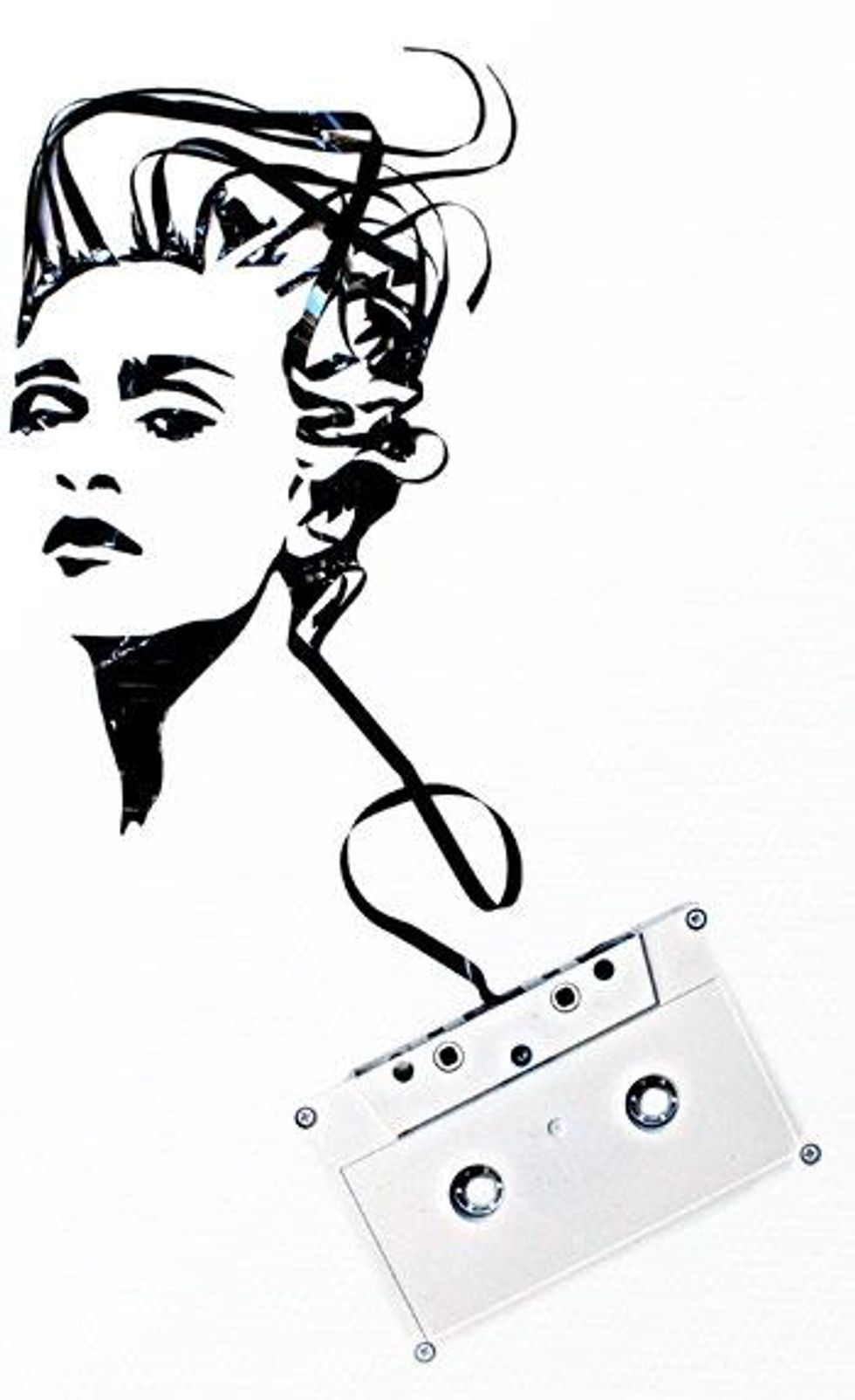
Other 1983 synthpop singles that got played to death either in the common room or in my bedroom included the deliciously silly "Blind Vision," by Blancmange; the surprisingly political "Bad Boys," by Wham!; the sublimely whiney "Everything Counts," by Depeche Mode; the cutesy-funky "Rip it Up," by Orange Juice; the fantastically pretentious and pompous "Visions in Blue," by Ultravox; the hair-prickling "Song to the Siren," by This Mortal Coil; the tantrummy torch song "Soul Inside," by Soft Cell (their last hurrah); the toe-tapping, fringe-flapping "Too Shy," by Kajagoogoo; the plaintive but insistent "Come Back and Stay," by Paul Young; the revving synth-reggae of "Electric Avenue," by Eddy Grant; the beating beauty of "All of My Heart," by ABC (released in 1982 but so big that it hogged much of 1983, too); the delightfully absurd synth-goth of "The Walk," by the Cure; the stolen kisses of "Our Lips Are Sealed," by Fun Boy Three; the bitter-sweet "Church of the Poison Mind," by Culture Club; the exhilaratingly obscure "Burning Down the House," by Talking Heads; the lipsticked charm of "(Keep Feeling) Fascination," by the Human League; and, of course, David Bowie's Nile Rodgers-produced smash "Let's Dance," a record that manages somehow to be both criminally danceable and strangely austere, like the White Witch of Narnia on roller skates.
With records like that as the soundtrack to our teenagerdom, is it any wonder that we thought ourselves the cat's meow?
LISTEN: SPOTIFY PLAYLIST OF 1983, LAST GREAT YEAR OF POP
Bowie (pictured above) had, in many ways, made the glamour and swish of synthpop possible; he was certainly the stylistic inspiration for the romantic wing of new wave (many of whom, however, chose to sing like Roxy Music's Bryan Ferry), famously bestowing his benediction on Steve Strange and assorted Blitz Kids in the video for 1980's "Ashes to Ashes," dressed in a Pierrot costume, being followed by a bulldozer. By 1983, Bowie had finally achieved the stateside success he had longed for throughout the '70s with his "Serious Moonlight" tour, becoming part of the "second British Invasion" of new wave acts.
The second British Invasion -- which, by the way, was almost certainly the last -- was more successful than the first, changing the American aesthetic as well as musical landscapes. Schooled by '70s Bowie, British new wave acts like Duran Duran were masterful at drawing attention to themselves onscreen and got saturation exposure on the newly founded MTV. Although their hit single "Girls on Film" was released in 1981, it wasn't until an MTV-friendly "day version" was reissued in March 1983 that the video became a staple on the channel, along with "Hungry Like the Wolf" and "The Reflex."
The synthpop sound and kooky styles of those quirky Brits became the hallmark of '80s MTV, and eventually made its way into the classic '80s high school movies of John Hughes. British new wave was especially popular on the West Coast and with Los Angeles's KROQ station -- and continued to be long after new wave had been rolled back in the U.K. (When I visited Los Angeles for the first time in 1990, I couldn't quite believe that all this British synthpop was still being played so much -- and in such a sunny place.)
It didn't hurt that many of the Brit synthpop bands were also very easy on the eyes. The women, like Lennox, could be very handsome, and the boys could be very pretty -- Duran Duran and Spandau Ballet certainly were, with the possible exception of their lead singers. In the promo for "Everything Counts," the seemingly sweet Essex boys of Depeche Mode look like they're in a Bel Ami video, albeit with clothes.
For my part, I had a crush on the fresh-faced Edwyn Collins from Orange Juice and Bernard Sumner from New Order (it was a long time ago), who I always thought sang like a boy crying in his bedroom with the window left deliberately open. Also Curt Smith from Tears for Fears, who was preposterously pretty, even with those mini pigtails. There was something about the boyish vulnerability and sensuality of synthpop that went with their kind of looks -- there was definitely a sexual ambiguity in the sequenced air.
Unfortunately for Smith, he also looked a bit like a lad at school I was hopelessly in love with. It was a requited but unconsummated affair -- which meant, of course, that it was endlessly orgasmic. I listened to the Tears for Fears album The Hurting, particularly the heartfelt yearnings of "Pale Shelter" -- "You don't give me love / you give me cold hands" -- much, much too much, and heard things that weren't really there. I even wrote to them via their record label, thanking them for daring to write such openly homoerotic lyrics -- and received a diplomatic letter of acknowledgement back from a PR agent informing me that Curt and Roland would be very pleased to hear their music "meant so much."
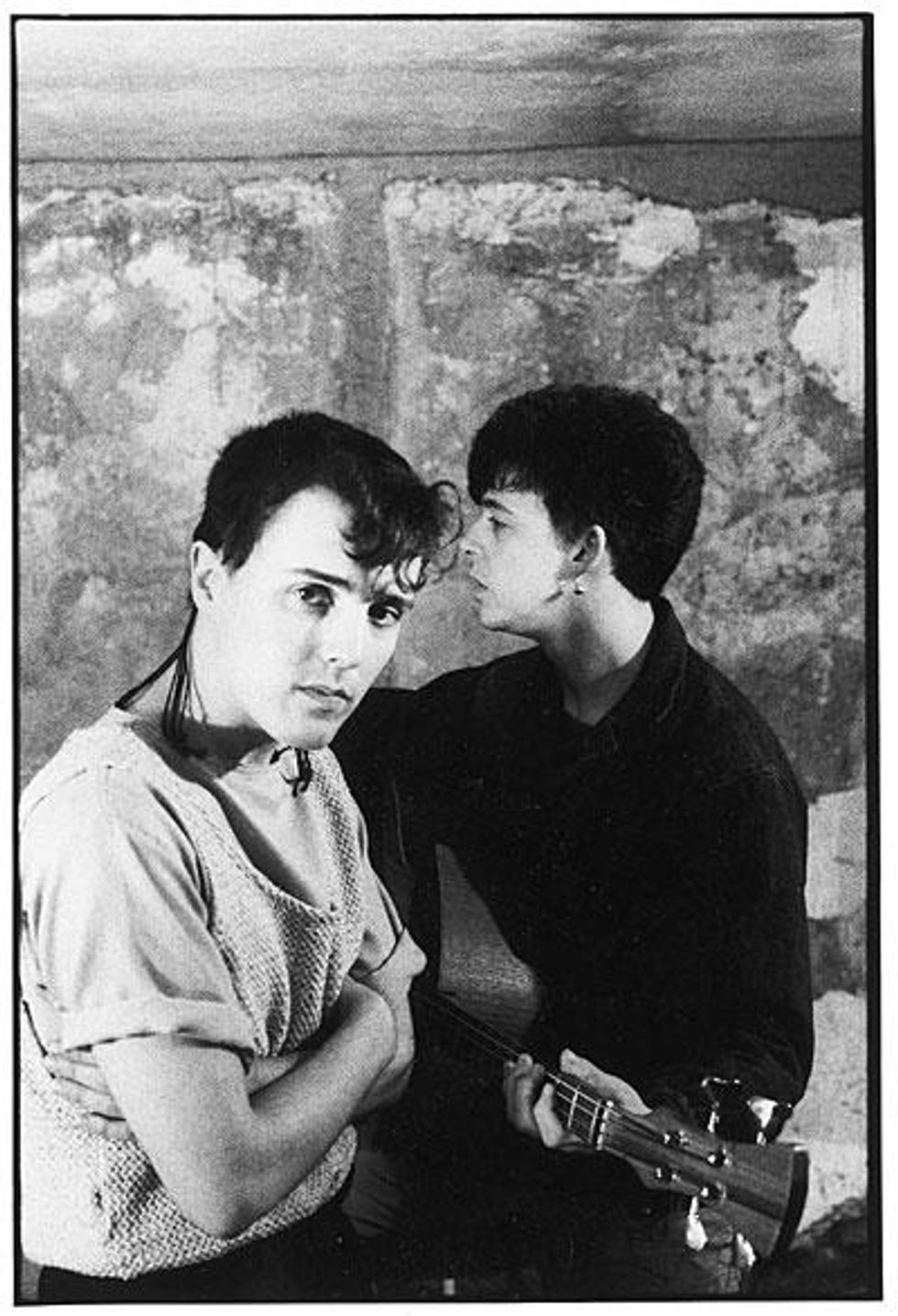
But of all of the pretty early '80s boys -- or girls -- Marilyn, a.k.a. Peter Robinson, was perhaps the prettiest. A star of new romantic stomping ground the Blitz club when his mate Boy George was working in the coat check there, he finally got a record deal in 1983 and had a hit with the catchy single "Calling Your Name." Finally the pop charts had a male gender bender who was sexy instead of mimsy, famously describing himself as "Tarzan and Jane rolled into one."
But a line had been crossed. Sadly, the story of Marilyn is also the story of the end of the high summer of synthpop/new wave. We had traveled too far and too fast in that stranger's open car -- the brakes were being applied. Margaret Thatcher, whose much vaunted "Victorian values" were to include a ban on gay propaganda, was reelected by a landslide in June 1983, thanks largely to the victory of the British armed forces over Argentina in a far-flung colonial outpost. Her bosom buddy Ronald Reagan had meanwhile essentially put the West on a war footing against the "Evil Empire," as he dubbed the Soviet Union. And Dr. Robert Gallo had isolated a virus he named HTLV-III, which had snuffed out Klaus Nomi and Jobriath in that same year. We now know it as HIV.
LISTEN: SPOTIFY PLAYLIST OF 1983, LAST GREAT YEAR OF POP
The delicious "art fag" decadence of new wave -- or "that queer English shit" as it was sometimes known -- was clearly doomed in the militaristic, materialistic, AIDS-terror climate of the mid-1980s. Male vulnerability and sexual ambiguity were now fatal weaknesses.
Marilyn's second single, "Cry and Be Free," a ballad released in 1984, was doing well until he appeared, pouting, on Top of the Pops in a glittery off-the-shoulder number. There was a visceral reaction as a nation recoiled from its own arousal. His single plummeted. His third, the ironically prescient "You Don't Love Me," stalled at number 40 on the U.K. charts. The career of the most beautiful boy in British pop was over.
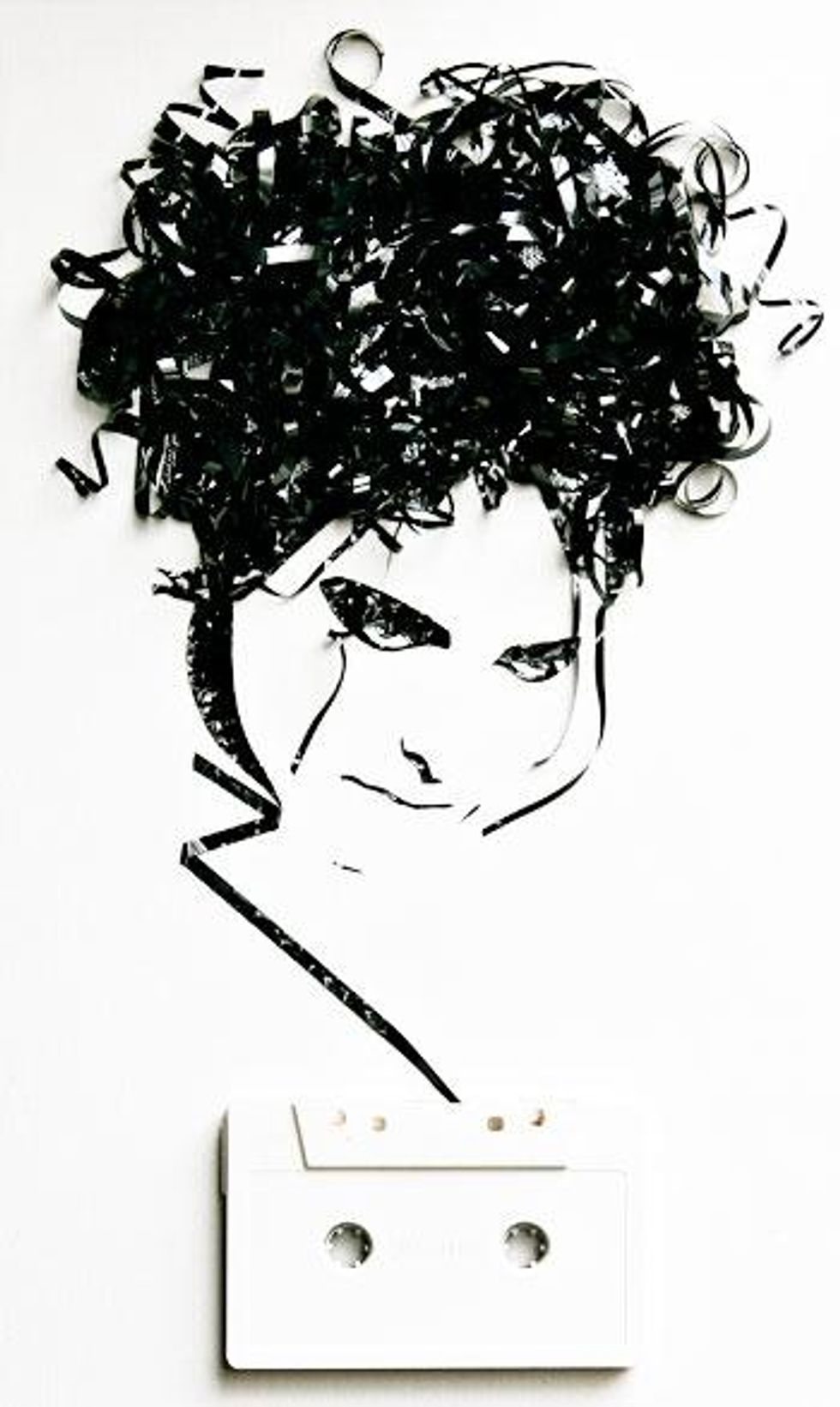
And so, essentially, was new wave, banished by a mid-'80s counterrevolution of guitar-led rock. Disco sucked again, and it gave you AIDS. And Bruce bloody Springsteen was the biggest thing on the U.K. charts in 1984. Yes, it's true that Frankie Goes to Hollywood's spunktacular dance track "Relax" finally hit number 1 in January 1984, but it had been released in 1983 and was banned by the BBC in 1984. Frankie went on to have more hits that year in the U.K., including, most famously, 'Two Tribes," which satirized the threat of the Cold War turning hot, and certainly sold a lot of T-shirts. But for my pocket money they definitely peaked with "Relax."
My school days ended in the summer of 1983, and with them my exquisitely doomed love affair. Synthpop, as it turned out, was also doomed. So you see, contrary to what the history books tell you, the world really did end in 1983 -- but at least I got the Technics SL-7 turntable for my 18th birthday.
I ended up playing the Smiths on it a lot -- and their eponymous first album, released in January 1984, complete with young Joe Dallesandro's naked torso on the sleeve, was very definitely the homoerotic bonanza I'd mistaken Tears for Fears's The Hurting for, albeit a celibate one.
READ: A Musical Primer to 1983
In a sense, the Smiths were the ultimate new wave/new pop band, one who eschewed synthesizers for guitars, which lead singer Morrissey, an uber fan of glam and punk, professed to hate. This turned out to be a smart move that kept them in business until 1987 -- and Morrissey, as a solo artist, to this day. But I suspect the Smiths were only allowed to happen at all because, despite their enormous fame today, they were a very well-kept secret in the '80s, barely troubling the British top 10 and effectively banned from daytime radio airplay.
The Smiths were semi-underground new wave, otherwise known as indie.
Want more breaking equality news & trending entertainment stories?
Check out our NEW 24/7 streaming service: the Advocate Channel!
Download the Advocate Channel App for your mobile phone and your favorite streaming device!